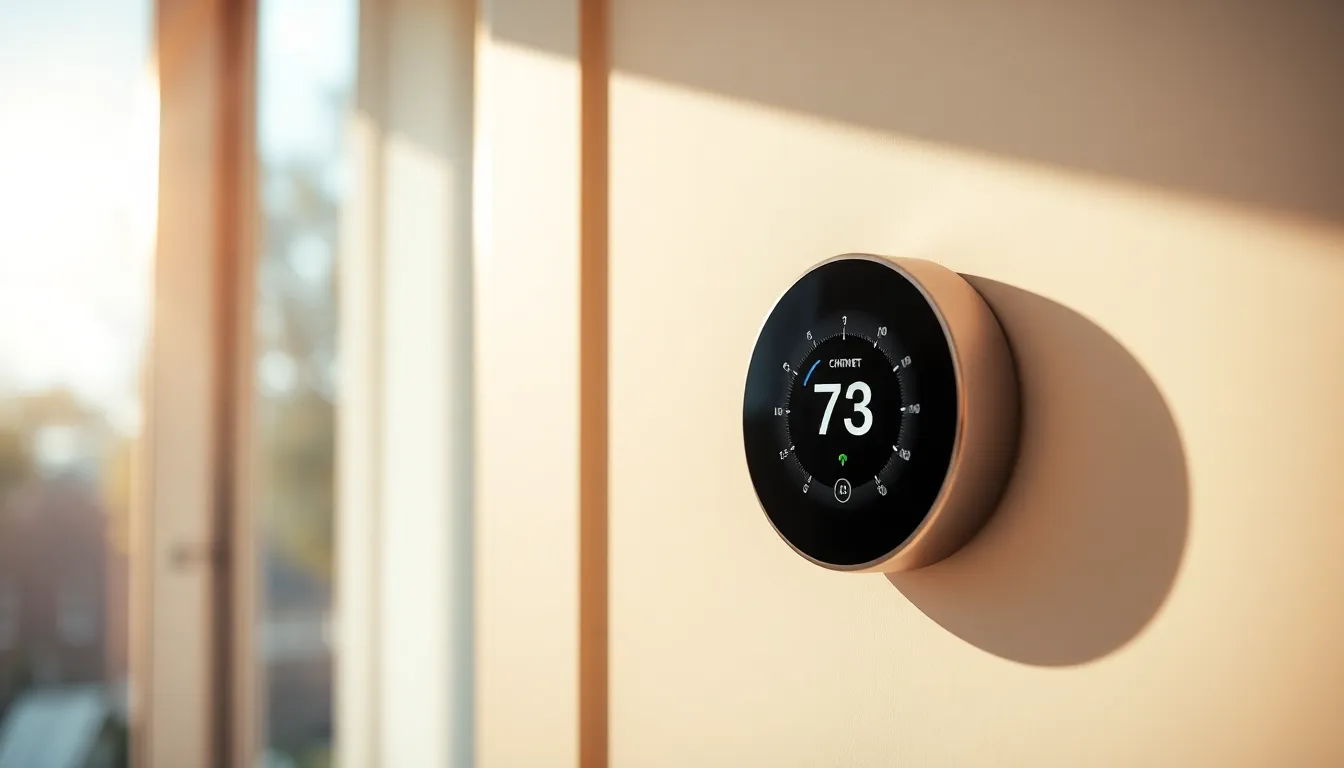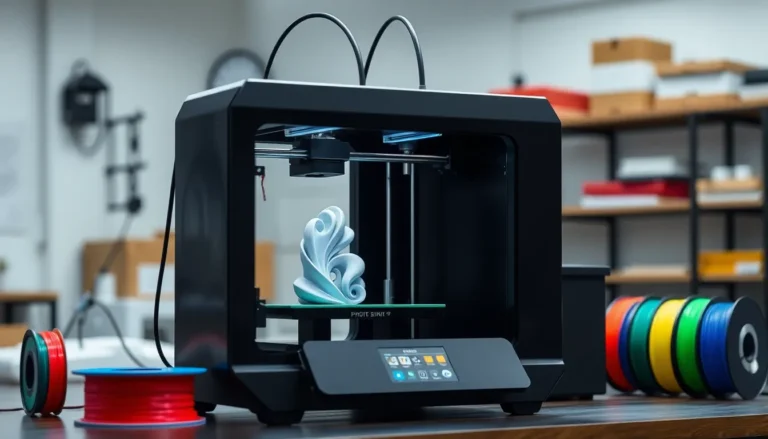Table of Contents
ToggleThe Internet of Things (IoT) is transforming the way people interact with technology. From smart homes to connected cars, IoT is at the forefront of innovation, making daily life more efficient and convenient. For beginners, understanding IoT can seem daunting, but it’s about connecting everyday devices to the internet and enabling them to communicate.
As more devices become “smart,” the potential applications expand across various industries. This technology isn’t just for tech enthusiasts; it’s reshaping how businesses operate and how individuals manage their lives. By exploring the fundamentals of IoT, anyone can grasp its significance and discover how it might enhance their world. Embracing this technology can lead to smarter decisions and a more connected lifestyle.
What Is IoT?
The Internet of Things (IoT) represents a network of interconnected devices that communicate over the internet. It transforms ordinary objects into “smart” devices, allowing for increased efficiency and automation across various settings.
Definition of IoT
IoT refers to the system where physical devices connected to the internet collect, exchange, and analyze data. This technology enables real-time information sharing, facilitating improved decision-making, monitoring, and control. For example, smart thermostats adapt to user preferences, optimizing energy consumption.
Key Components of IoT
- Devices and Sensors: Devices such as thermostats, wearables, and industrial machines include sensors that capture data from their environments.
- Connectivity: A reliable internet connection is essential, allowing devices to communicate with each other and cloud services.
- Data Processing: Collected data undergoes processing through cloud computing or edge computing solutions, enabling actionable insights.
- User Interface: Users interact with IoT systems via apps or dashboards, allowing control and monitoring of connected devices.
Understanding these components provides insight into how IoT systems function and their potential applications across industries.
Benefits of IoT


IoT offers numerous benefits that impact both personal and professional domains, enhancing everyday functioning and decision-making processes.
Enhanced Efficiency
Enhanced efficiency represents one of the primary advantages of IoT implementation. Devices connected through IoT automate routine tasks, reducing human intervention and potential errors. For instance, smart thermostats adjust temperatures based on user habits, optimizing energy consumption and minimizing waste. In industrial settings, IoT sensors monitor machinery performance in real-time, predicting maintenance needs and preventing costly downtimes. Such improvements streamline processes and contribute to significant cost savings.
Improved Data Collection
Improved data collection occurs through the vast network of IoT devices continually gathering and transmitting information. This data provides insights into user behaviors, environmental conditions, and operational efficiencies. For example, wearable health devices track vital signs, enabling users to monitor their health metrics extensively. In agriculture, IoT sensors collect data on soil moisture levels and crop health, helping farmers make informed decisions that enhance yields. The ability to collect and analyze data more effectively allows organizations to refine strategies, tailor services, and enhance customer experiences.
IoT Applications
IoT technology plays a crucial role in various sectors, transforming everyday interactions and operational practices. Key applications include smart homes and industrial IoT.
Smart Homes
Smart homes utilize IoT technology to enhance convenience, security, and energy efficiency. Devices like smart thermostats adjust temperature settings based on user preferences, while smart locks enable remote access control for home security. Home automation systems facilitate control over lighting, appliances, and entertainment systems through smartphone applications or voice commands. These interconnected devices provide users with real-time data, allowing for informed decisions regarding energy use and home security.
Industrial IoT
Industrial IoT (IIoT) revolutionizes manufacturing and supply chain operations. Sensors monitor equipment health, enabling predictive maintenance that minimizes downtime. IIoT applications facilitate real-time tracking of inventory, enhancing logistics and reducing operational costs. Smart analytics platforms process vast amounts of data from connected devices, helping companies optimize processes and improve overall efficiency. These applications lead to increased productivity and better resource management within industrial environments.
Getting Started with IoT
Beginning with IoT involves grasping essential concepts, skills, and tools. Familiarity with these components accelerates the journey into this innovative field.
Required Skills and Knowledge
Individuals exploring IoT benefit from understanding several core skills and concepts:
- Networking Fundamentals: Knowledge of basic networking principles, including IP addressing and protocols, aids in comprehending device communication.
- Programming Languages: Familiarity with programming languages such as Python, Java, or C++ is valuable for developing and managing IoT applications.
- Data Analysis: Skills in data analysis enable users to interpret data generated by IoT devices, facilitating informed decision-making.
- Understanding of Sensors: Grasping how various sensors function and their integration into devices is crucial for effective IoT application development.
- Cybersecurity Awareness: Awareness of cybersecurity practices protects connected devices and systems from potential threats.
Essential Tools and Platforms
Several tools and platforms support IoT development and deployment:
- Arduino: A popular DIY microcontroller platform for building simple IoT devices, offering extensive community support and resources.
- Raspberry Pi: A versatile single-board computer ideal for prototyping IoT projects, providing flexibility in design and development.
- Cloud Platforms: Services like AWS IoT, Microsoft Azure, and Google Cloud offer infrastructure for data storage, processing, and deployment of IoT solutions.
- IoT Development Frameworks: Frameworks such as Node-RED and ThingSpeak streamline the development of IoT applications through visual programming interfaces.
- Mobile Application Development Tools: Tools like Flutter or React Native facilitate the creation of mobile apps for IoT device management.
These skills and tools form a robust foundation for navigating the IoT landscape effectively.
Challenges in IoT
IoT technology presents various challenges that impact its adoption and performance. These challenges include security concerns and compatibility issues, both of which require careful consideration.
Security Concerns
Security remains a paramount challenge within IoT. As devices connect to the internet, the risk of unauthorized access increases, exposing sensitive data and systems to potential breaches. Reports indicate that over 70% of IoT devices are vulnerable to attacks due to inadequate security measures. Organizations must implement strong encryption protocols, regular software updates, and secure authentication methods to safeguard devices. Additionally, the complexity of managing numerous connected devices complicates monitoring for vulnerabilities and responding to threats proactively.
Compatibility Issues
Compatibility challenges arise as IoT ecosystems expand. Various manufacturers produce devices that may not communicate seamlessly due to differing standards and communication protocols. For example, a smart home system from one brand might not work effectively with devices from another. Over 60% of IoT projects encounter integration difficulties, often leading to fragmented user experiences. To address compatibility issues, stakeholders should prioritize the use of open standards and collaborative frameworks that promote interoperability among devices, allowing for more cohesive and efficient systems.
The Internet of Things is undeniably shaping the future of technology and daily living. By connecting devices and enabling them to communicate, IoT is enhancing efficiency and transforming how individuals and businesses operate.
As more people become aware of its potential, the opportunities for innovation and improvement will only grow. Embracing IoT not only leads to smarter homes and workplaces but also empowers users to make informed decisions based on real-time data.
With the right skills and tools, anyone can dive into the world of IoT, unlocking a wealth of possibilities for a more connected and efficient lifestyle.








